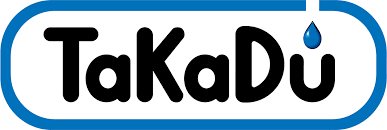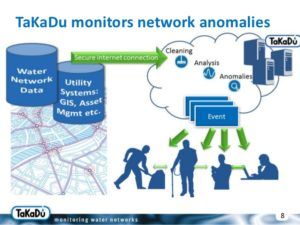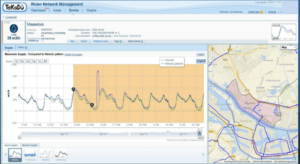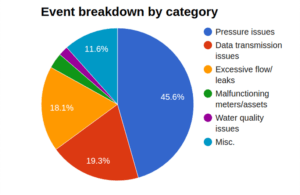TaKaDu: Sustainability data analytics warrior

Data analytics champion to solve water management problems
“Water crisis is one of the greatest problems that the world would face in 2040”, Mr. Amir Peleg said in his address after receiving Sustania award in 2013. He continued, “growth in human water consumption has doubled in the last century because of changes in our lifestyle. If not addressed, water scarcity will squeeze food and energy supply chains, and stall economic growth.” [1] TaKaDu, an Israeli based data analytics company, was started by Amir to improve water utility’s infrastructure world over.
TaKaDu background story –
Amir started TaKaDu in 2009 as he came to understand that water utilities world over, despite collecting lot of data, did not improve on their non-revenue water (NRW) indicator. NRW is an indicator about how much water is lost before it reached customers. And, in developed countries, it hovered around 30%. In 5 years after its inception, it became a leading software provider of integrated event management solutions for water sector.
How it creates value–
TaKaDu’s IoT cloud based data analytics solution helps water utilities to manage their complete infrastructure by detecting events, such as leaks, bursts, water pressure issues, water quality, and faulty assets. This improves customer service by facilitating quicker, smarter decisions for utility managers. Also, it gives a spillover benefit by reducing wastage of water from common resources like lakes, ponds etc. (Exhibit 1 shows the general description of TaKaDu’s operations for the use case of water utlilities.)
Exhibit 1
As depicted in exhibit 1, the sensor collects all the information of water utility and sends it to a system which logged the data. Then, the data is analysed by TaKaDu’s cloud based algorithms. Comparing the results with the historical patterns, the system raises any aberration as an event (exhibit 2).
Exhibit 2
Further, it intelligently categorizes (exhibit 3) it to the potential causes for abnormality (eg: pipe broken, faulty meter etc.) in a dashboard. This would in turn help the utility managers to respond quickly thereby improving the efficiency and reducing the loss.
Exhibit 3
How it captures value –
The company captures value by charging their clients for the installation and improvement of the software. It initially set $10 per kilometre per month, but quickly shifted to tiered pricing scheme with lower prices as the distance increases. For a water utility using the software for 1000 km, the cost would be around $120,000.
International Expansion and challenges –
At present, the company operates in 9 countries, covering around 45000 km. It has successfully detected around 700000 events. Most of the clients the company got is through ‘word-of-mouth’ marketing of his previous clients, who recommended his work to their friends in other utilities. With IBM and GE entering the fray, TaKaDu needs to find funds to improve on their software and to speed up marketing efforts. It has first-mover advantage and experience of operating in 4 countries. Also, it successfully navigated through the regulators of different countries to find which regulators incentivize water utilities for being efficient. Australia remains the primary market as companies over there are looking at innovative solution to improve their performance. However, challenges to the growth remains aplenty. In this HBR article [8], Amir points out how water utilities across the world are yet to fully understand the benefits of using data analytics and stick to old processes as the incentives to performance are linked to response to water leak rather than to prevent water leaks. The success of this innovative company depends on the above mentioned both internal (funding) and external factors (organisational change, regulator incentive change)
References –
[1] https://vimeo.com/78862701 (Sustania speech)
[2] https://www.youtube.com/watch?v=b8xHeXsQxww (Unity Bird, System Loss Engineer)
[3] http://www.utilitymagazine.com.au/working-together-to-benefit-small-water-utilities/
[5] http://www.matchpointinc.us/wp-content/uploads/2017/01/TaKaDu-Brochure.pdf
[6] http://www.eco-business.com/news/6-water-saving-innovations-to-celebrate-this-world-water-day/ (award)
[7] http://media.wix.com/ugd/052e8c_6dd944a6488a445b967988667fcccee1.pdf (use case)
[8] https://hbr.org/2017/03/how-the-water-industry-learned-to-embrace-data





